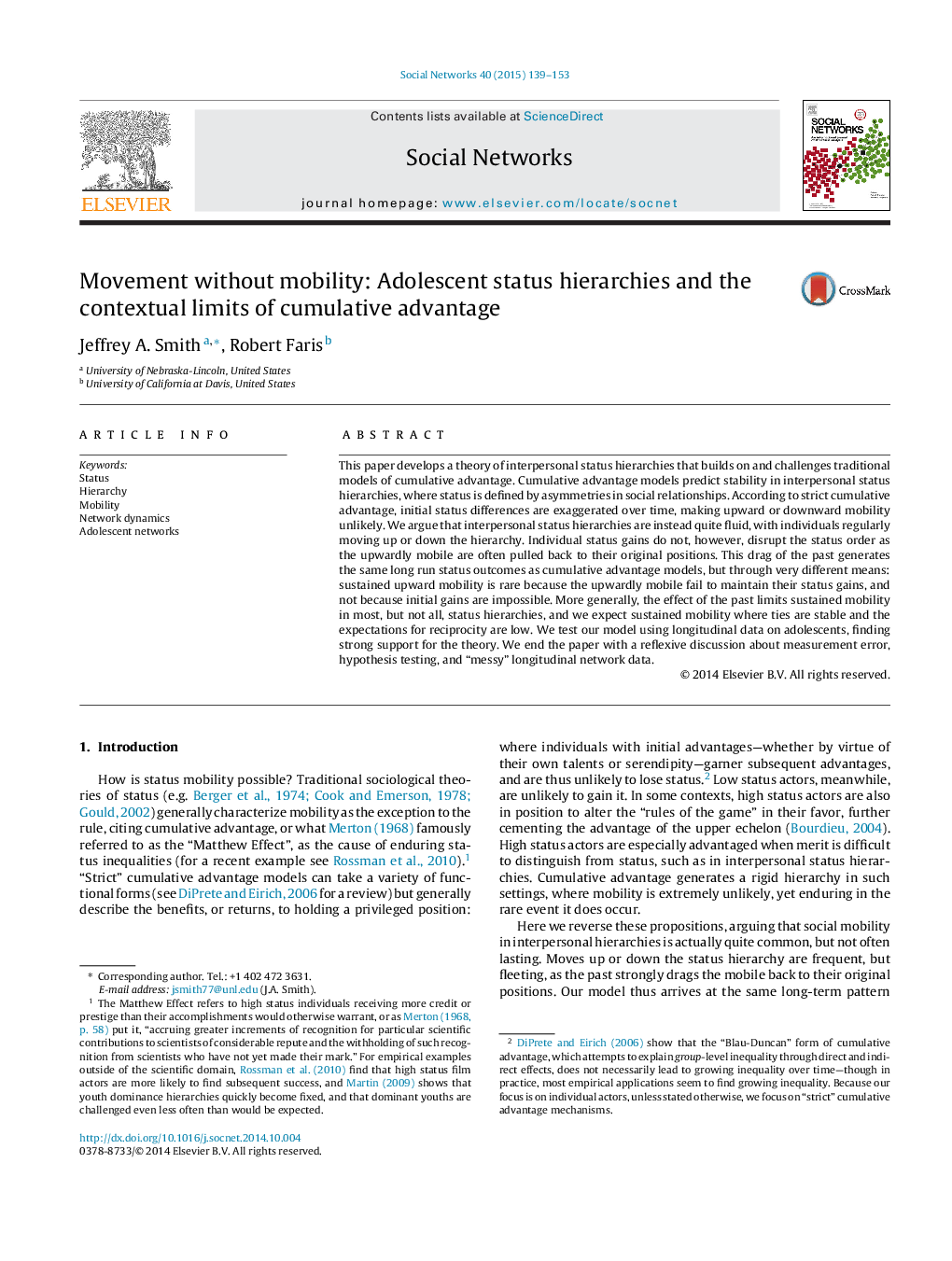| کد مقاله | کد نشریه | سال انتشار | مقاله انگلیسی | نسخه تمام متن |
|---|---|---|---|---|
| 1129162 | 1488859 | 2015 | 15 صفحه PDF | دانلود رایگان |
• We test a theory of interpersonal status hierarchies using adolescent network data.
• Status hierarchies are fluid, with individuals regularly moving up or down the hierarchy.
• The upwardly mobile often lose gained status, leading to long run stability in the status order.
• The drag of the past is strongest when ties are stable and expectations for reciprocity are low.
This paper develops a theory of interpersonal status hierarchies that builds on and challenges traditional models of cumulative advantage. Cumulative advantage models predict stability in interpersonal status hierarchies, where status is defined by asymmetries in social relationships. According to strict cumulative advantage, initial status differences are exaggerated over time, making upward or downward mobility unlikely. We argue that interpersonal status hierarchies are instead quite fluid, with individuals regularly moving up or down the hierarchy. Individual status gains do not, however, disrupt the status order as the upwardly mobile are often pulled back to their original positions. This drag of the past generates the same long run status outcomes as cumulative advantage models, but through very different means: sustained upward mobility is rare because the upwardly mobile fail to maintain their status gains, and not because initial gains are impossible. More generally, the effect of the past limits sustained mobility in most, but not all, status hierarchies, and we expect sustained mobility where ties are stable and the expectations for reciprocity are low. We test our model using longitudinal data on adolescents, finding strong support for the theory. We end the paper with a reflexive discussion about measurement error, hypothesis testing, and “messy” longitudinal network data.
Journal: Social Networks - Volume 40, January 2015, Pages 139–153
